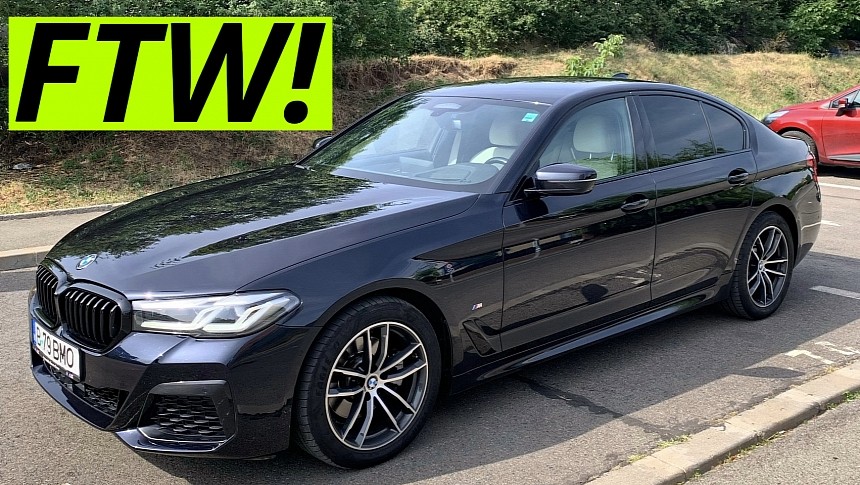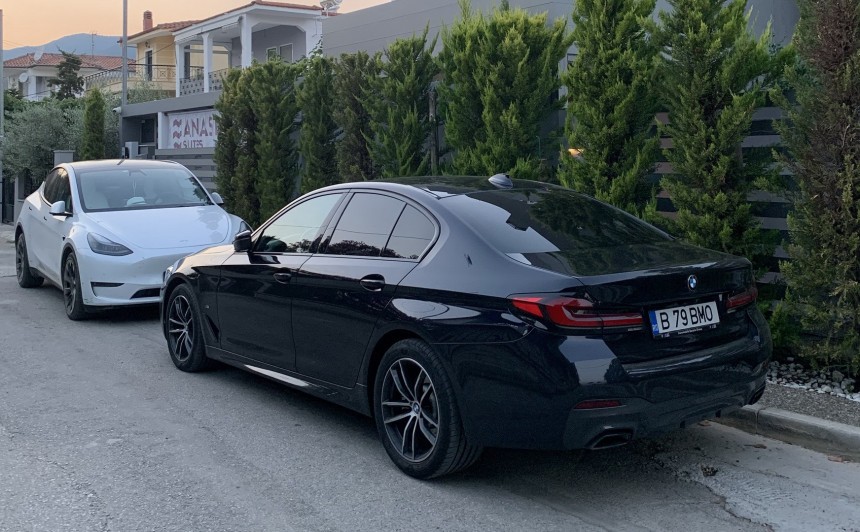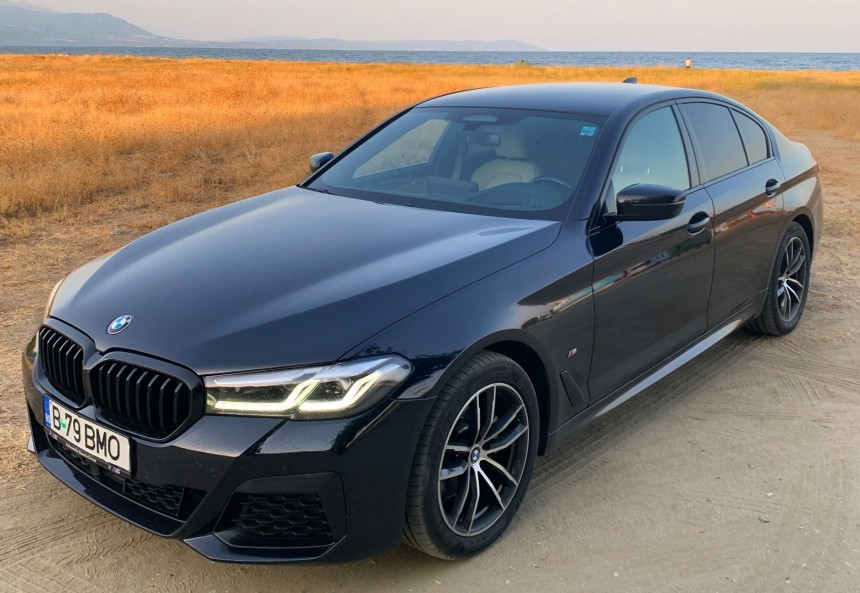I really don’t want this to be a kill-piece aimed at the electric vehicle industry. I love EVs. They are the future and there’s literally nothing the oil companies can say or do about it. They might as well get with the program and odds are, they’ll figure out how to monetize this in their favor soon enough, I reckon.
The rest of us, meanwhile, are left with a bit of a dilemma. Is an electric vehicle the right choice in 2023 when buying a new car? Is it still better to get a gas-powered one? Or maybe a diesel, depending on where you live.
What about used cars? The questions will just keep coming and I think the answers will always point back to the infrastructure, first and foremost. Then there’s the question of market/location, price, overall value for money, and so on.
Anyway, back in July, I took a long-distance trip by car, for a total of 870 miles round-trip, 435 miles each way.
Before leaving, I had to decide what type of car I would take and long story short, the decision came down between three brand-new 2023MY BMWs; one was battery-electric, another ran on gasoline and then the third one used diesel fuel.
The battery-electric option was a BMW i4 eDrive40, which as you know is based on the 4 Series Gran Coupe. U.S. buyers can shop for an i4 from $52,200, which lands you the entry-level eDrive35 specification. The eDrive40 costs upwards of $57,300, the xDrive40 is $61,600, while the range-topping i4 M50 boasts a starting MSRP of $69,700.
Back to the i4 eDrive40, it is a rear-wheel drive model, powered by a single electric motor and an 83.9 kWh battery. It will get you from zero to 60 mph in 5.4 seconds, and with a full battery, it’ll drive non-stop for anywhere between 283 (455 km) and 301 miles (484 km), as per EPA estimates.
I know what you’re thinking. If this is all about range, why didn’t I consider something like a Tesla Model S Long Range, which at its best, can muster 402 miles (647 km) on a single charge. Well, one wasn’t available, and it would have probably cost too much. Besides, 402 miles is a best-case scenario that you’ll likely never attain. Also, the range on that i4 eDrive40 is pretty much, on average, what you’d get with most reasonably priced premium EVs.
Moving on to my second option - which I wasn’t too keen on for several reasons, the first being its size. Traveling long distances in a small or even compact car can be very tiring, and this is mainly why I didn’t choose to take a BMW 2 Series Gran Coupe on my trip. It was a lowly 218i specification, which isn’t even available in the U.S.
It is, of course, gasoline-powered, and given its modest specs (136 hp three-cylinder turbocharged gasoline unit), it can do a pretty darn good job range-wise. It’s got an 11-gallon (42 liter) gas tank, and while average fuel consumption isn’t too bad on paper, this is not the type of engine you want with you when taking a long road trip, especially if you’re often at highway speed, while also dealing with towns and villages along the way, plus mountainous single lane roads where you’re overtaking slower traffic.
Finally, we arrive at choice no. 3, which was always going to be my “no.1 draft pick” as far as this dilemma was concerned: the G30 BMW 5 Series. More specifically the 520d, which is powered by a turbocharged 2.0-liter diesel engine with a 48V mild-hybrid system, good for 188 horsepower and 295 lb-ft of torque. The grunt is channeled to the rear wheels via an eight-speed automatic transmission, and in a straight line, it’ll do 0-60 mph in about 7.5 seconds. Perfectly decent, but not relevant in this discussion.
What is relevant is the sheer size of its gas (diesel) tank, specifically 17.4 gallons (66 liters). Mind you, I didn’t leave on this trip worrying about fuel consumption. I also didn’t know whether I would have to stop and refuel, and I most certainly didn’t drive as economically as possible in order to improve range – on the contrary, I was focused on making good time, within legal limits, naturally. Also, I kept the car in Comfort Mode throughout, not Eco Pro.
When I arrived at my destination, approximately 435 miles (700 km) away from where I began my journey, I looked down at my fuel indicator in disbelief. The 520d still had half a tank of gas left. The line hadn’t even dropped beneath the midway marker for fuel status on the digital display. All I could say was... what a tremendous drivetrain. To travel 435 miles on just half a tank in a midsize executive sedan is one for the ages, especially when your focus isn’t at all on being economical.
This right here is what’s hurting the electric vehicle industry right now, especially in Europe and other places where frugal turbodiesel engines roam free. You could never have completed that trip in an EV without stopping to recharge at least once (most likely twice), which could have added maybe an extra 1-2 hours to your journey, depending on the charging station. Sometimes, an extra 1-2 hours can be too much, especially if you’ve already been driving for several hours.
Because of the complex nature of my route (some highways here or there to go with frequent slow single-lane roads), it took me 8 hours to arrive at my destination, including a single 20 min stop for a snack.
Ultimately, very few other cars would have done what that diesel-powered 5 Series did for me. Scratch that, I’m sure that rivals such as the Audi A6 or Mercedes E-Class with comparable specs (2.0L diesel engines) would have performed similarly. But their gasoline counterparts? They would have gotten me there on a full tank of gas easily, yes, but certainly not on half a tank.
As for an EV... I mean, forget about it. Maybe in another 5-10 years once they’ve all been fitted with solid state batteries, like Toyota keeps promising.
What about used cars? The questions will just keep coming and I think the answers will always point back to the infrastructure, first and foremost. Then there’s the question of market/location, price, overall value for money, and so on.
Anyway, back in July, I took a long-distance trip by car, for a total of 870 miles round-trip, 435 miles each way.
Before leaving, I had to decide what type of car I would take and long story short, the decision came down between three brand-new 2023MY BMWs; one was battery-electric, another ran on gasoline and then the third one used diesel fuel.
The battery-electric option was a BMW i4 eDrive40, which as you know is based on the 4 Series Gran Coupe. U.S. buyers can shop for an i4 from $52,200, which lands you the entry-level eDrive35 specification. The eDrive40 costs upwards of $57,300, the xDrive40 is $61,600, while the range-topping i4 M50 boasts a starting MSRP of $69,700.
Back to the i4 eDrive40, it is a rear-wheel drive model, powered by a single electric motor and an 83.9 kWh battery. It will get you from zero to 60 mph in 5.4 seconds, and with a full battery, it’ll drive non-stop for anywhere between 283 (455 km) and 301 miles (484 km), as per EPA estimates.
Moving on to my second option - which I wasn’t too keen on for several reasons, the first being its size. Traveling long distances in a small or even compact car can be very tiring, and this is mainly why I didn’t choose to take a BMW 2 Series Gran Coupe on my trip. It was a lowly 218i specification, which isn’t even available in the U.S.
It is, of course, gasoline-powered, and given its modest specs (136 hp three-cylinder turbocharged gasoline unit), it can do a pretty darn good job range-wise. It’s got an 11-gallon (42 liter) gas tank, and while average fuel consumption isn’t too bad on paper, this is not the type of engine you want with you when taking a long road trip, especially if you’re often at highway speed, while also dealing with towns and villages along the way, plus mountainous single lane roads where you’re overtaking slower traffic.
Finally, we arrive at choice no. 3, which was always going to be my “no.1 draft pick” as far as this dilemma was concerned: the G30 BMW 5 Series. More specifically the 520d, which is powered by a turbocharged 2.0-liter diesel engine with a 48V mild-hybrid system, good for 188 horsepower and 295 lb-ft of torque. The grunt is channeled to the rear wheels via an eight-speed automatic transmission, and in a straight line, it’ll do 0-60 mph in about 7.5 seconds. Perfectly decent, but not relevant in this discussion.
What is relevant is the sheer size of its gas (diesel) tank, specifically 17.4 gallons (66 liters). Mind you, I didn’t leave on this trip worrying about fuel consumption. I also didn’t know whether I would have to stop and refuel, and I most certainly didn’t drive as economically as possible in order to improve range – on the contrary, I was focused on making good time, within legal limits, naturally. Also, I kept the car in Comfort Mode throughout, not Eco Pro.
This right here is what’s hurting the electric vehicle industry right now, especially in Europe and other places where frugal turbodiesel engines roam free. You could never have completed that trip in an EV without stopping to recharge at least once (most likely twice), which could have added maybe an extra 1-2 hours to your journey, depending on the charging station. Sometimes, an extra 1-2 hours can be too much, especially if you’ve already been driving for several hours.
Because of the complex nature of my route (some highways here or there to go with frequent slow single-lane roads), it took me 8 hours to arrive at my destination, including a single 20 min stop for a snack.
Ultimately, very few other cars would have done what that diesel-powered 5 Series did for me. Scratch that, I’m sure that rivals such as the Audi A6 or Mercedes E-Class with comparable specs (2.0L diesel engines) would have performed similarly. But their gasoline counterparts? They would have gotten me there on a full tank of gas easily, yes, but certainly not on half a tank.
As for an EV... I mean, forget about it. Maybe in another 5-10 years once they’ve all been fitted with solid state batteries, like Toyota keeps promising.









